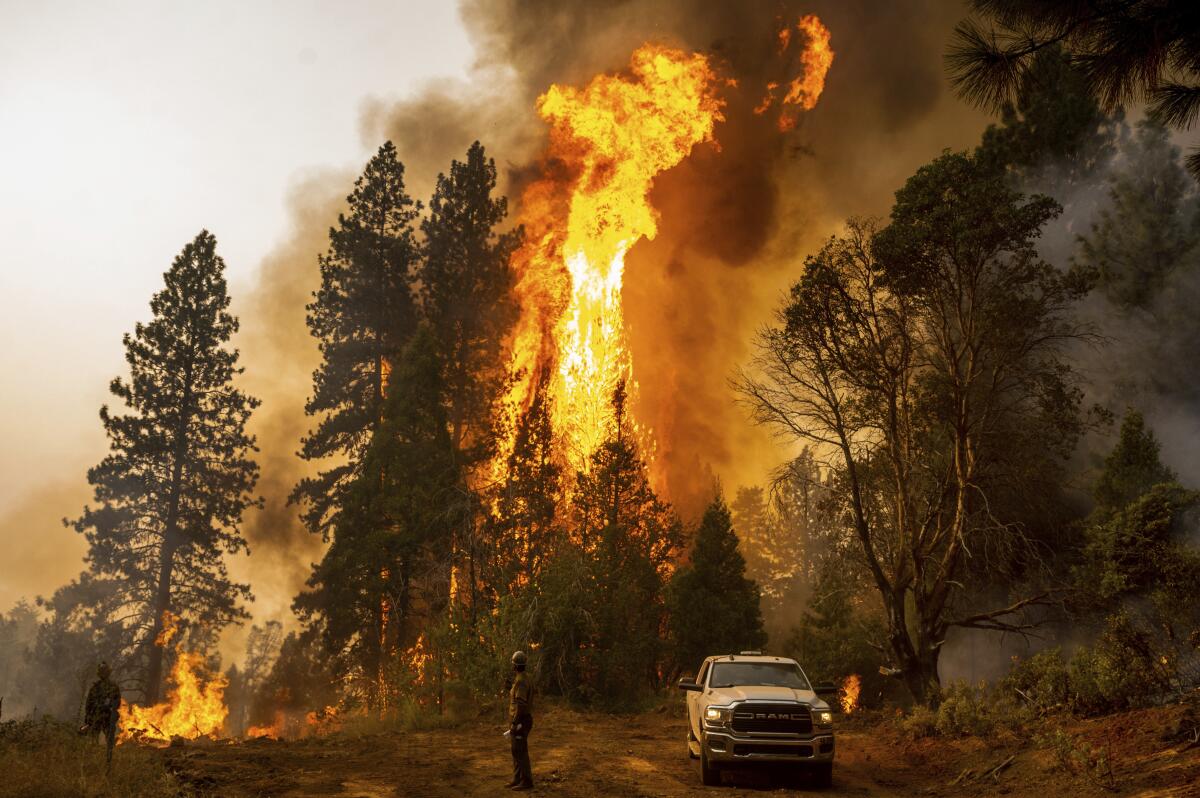
Wildfires are a natural disaster that can wreak havoc on ecosystems and communities. They are uncontrollable and devastating, causing widespread destruction and loss of life. While wildfires are often associated with dry and hot climates, they can occur in various regions around the world. From their causes to their impacts, wildfires have always fascinated and concerned people. In this article, we will explore 17 surprising facts about wildfires that you may not be aware of. These facts will delve into the different aspects of wildfires, including their history, characteristics, and ecological effects. So, prepare to be amazed and learn something new about these powerful and awe-inspiring natural forces.
Key Takeaways:
- Wildfires are often caused by human activity, like campfires and discarded cigarettes, and can reach temperatures of over 2,000 degrees Fahrenheit, making them extremely dangerous and difficult to extinguish.
- While destructive, wildfires play a vital role in the ecosystem by clearing away dead vegetation, promoting new growth, and rejuvenating the environment. However, climate change is expected to increase their frequency and intensity.
Wildfires can reach temperatures of over 2,000 degrees Fahrenheit.
These extreme temperatures contribute to the rapid spread and intensity of wildfires, making them highly dangerous and difficult to extinguish.
The majority of wildfires are caused by human activity.
According to studies, around 85% of wildfires are started by human actions such as campfires, discarded cigarettes, and arson.
Lightning strikes are another major cause of wildfires.
Approximately 10% of wildfires are ignited by lightning strikes, particularly in regions prone to thunderstorms.
Wildfires play a vital role in the ecosystem.
While destructive, wildfires also serve a purpose by clearing away dead vegetation, promoting new growth, and rejuvenating the ecosystem.
The largest wildfire in recorded history occurred in Siberia in 2003.
Spanning an astonishing 56,000 square miles, this wildfire burned for more than three months, releasing massive amounts of carbon dioxide into the atmosphere.
Australia experiences some of the most severe wildfires in the world.
The country’s hot and dry climate, combined with its unique vegetation, makes it highly susceptible to devastating wildfires.
Wildfires can create their own weather.
The intense heat generated by large fires can cause air to rise rapidly, leading to the formation of pyrocumulus clouds, fire whirls, and even fire tornadoes.
California has the highest number of wildfires in the United States.
The state’s dry climate, strong winds, and vast wildlands contribute to the frequent occurrence of destructive wildfires.
Smokey Bear became the symbol of wildfire prevention in 1944.
The beloved character, created by the U.S. Forest Service, reminds us that “only you can prevent wildfires.”
Wildfires release significant amounts of greenhouse gases into the atmosphere.
The burning of forests and vegetation releases carbon dioxide, methane, and other greenhouse gases, contributing to climate change.
Controlled burns can help prevent larger wildfires.
By intentionally setting smaller fires under controlled conditions, land managers can reduce fuel loads and mitigate the risk of more destructive fires.
Wildfires can have a devastating impact on wildlife.
Many animals are unable to escape rapidly spreading wildfires, leading to population declines and habitat loss.
Firefighters use a variety of techniques to battle wildfires.
These techniques include creating firebreaks, using water-dropping aircraft, and employing hand tools to control and extinguish wildfires.
Some plant species depend on wildfires for reproduction.
Seeds from certain plants, such as the lodgepole pine, remain dormant until triggered by the heat of a fire to germinate and grow.
Wildfires can have long-lasting effects on water quality.
After a wildfire, runoff from burned areas can carry ash, sediment, and pollutants into nearby rivers and streams, impacting aquatic ecosystems.
The Great Fire of London in 1666 was one of the most famous urban wildfires in history.
It destroyed much of the city, leading to significant changes in urban planning and fire safety regulations.
Climate change is expected to increase the frequency and intensity of wildfires.
Rising temperatures, prolonged droughts, and changing weather patterns contribute to the conditions favorable for the occurrence and spread of wildfires.
Conclusion
Wildfires are a natural phenomenon that can have devastating effects on the environment and communities. From their unpredictable behavior to their ability to create their own weather systems, wildfires are truly remarkable and dangerous. By understanding more about wildfires, communities can better prepare and respond to these events. Awareness and education are key in minimizing the impact of wildfires and ensuring the safety and well-being of both people and wildlife.
FAQs
Q: How do wildfires start?
A: Wildfires can start from natural causes such as lightning strikes or from human activities such as campfires, cigarettes, or arson.
Q: Can wildfires be beneficial?
A: Yes, wildfires play an important role in certain ecosystems. They help remove dead vegetation, promote new growth, and contribute to the overall health of forests.
Q: Are wildfires getting worse?
A: There is growing evidence to suggest that wildfires are becoming more frequent and intense due to factors such as climate change, land management practices, and human encroachment into wildland areas.
Q: How do firefighters control wildfires?
A: Firefighters use a combination of strategies, including establishing containment lines, using fire retardants, and conducting controlled burns to remove fuel and minimize the spread of the fire.
Q: What is the biggest wildfire ever recorded?
A: The largest wildfire on record is the 1988 Yellowstone National Park wildfire, which burned over 790,000 acres of land.
Was this page helpful?
Our commitment to delivering trustworthy and engaging content is at the heart of what we do. Each fact on our site is contributed by real users like you, bringing a wealth of diverse insights and information. To ensure the highest standards of accuracy and reliability, our dedicated editors meticulously review each submission. This process guarantees that the facts we share are not only fascinating but also credible. Trust in our commitment to quality and authenticity as you explore and learn with us.
